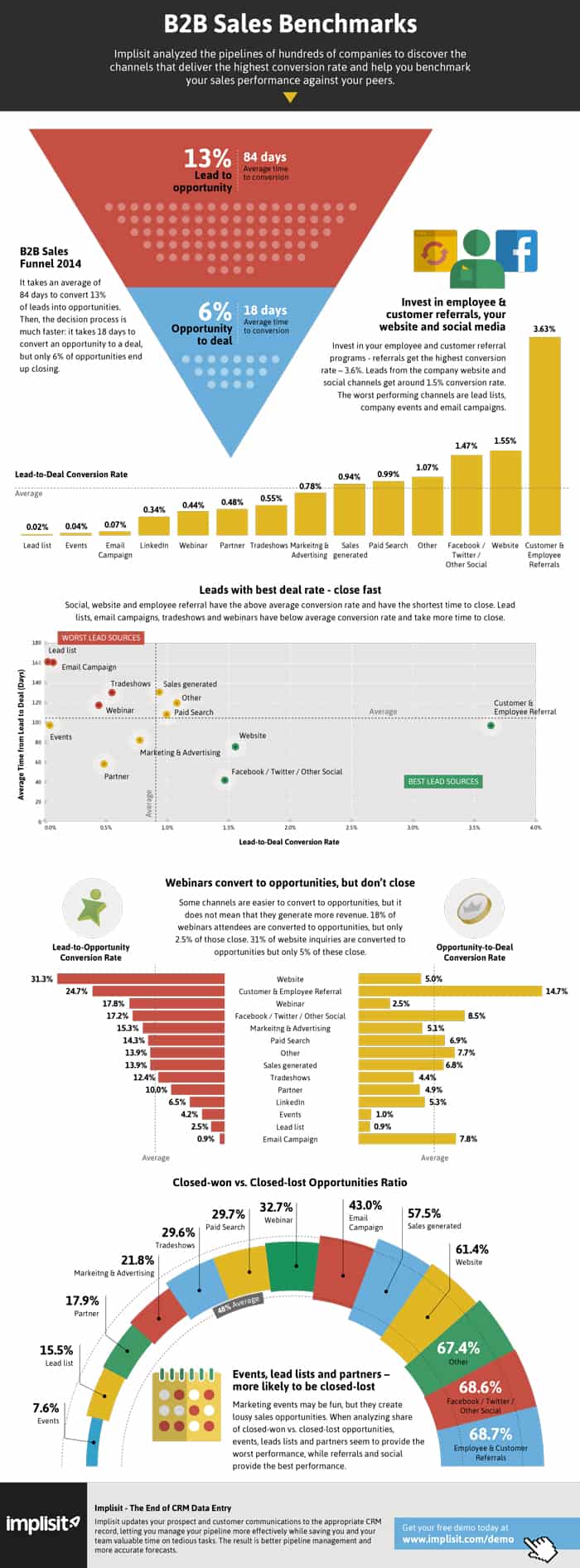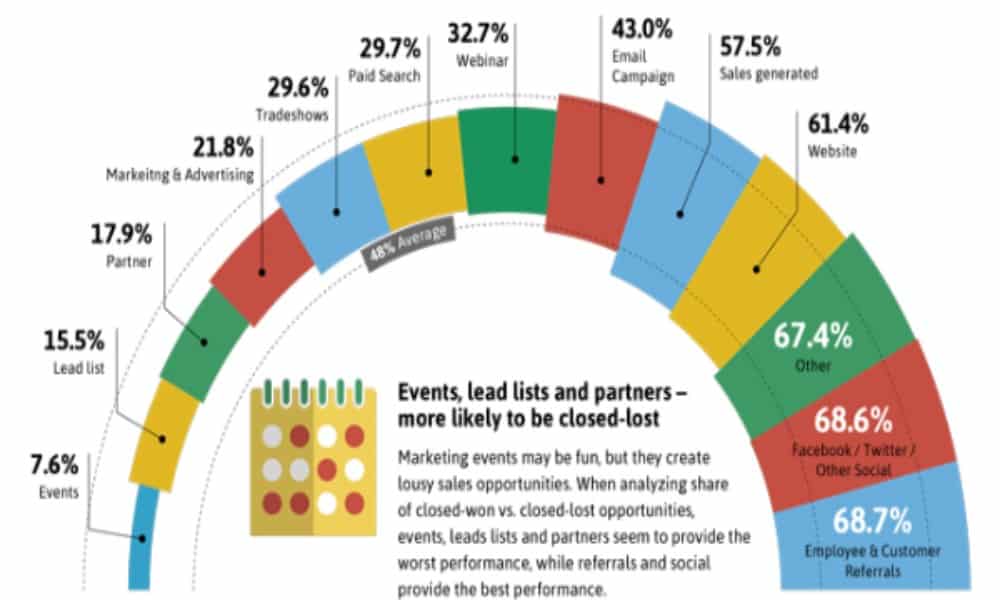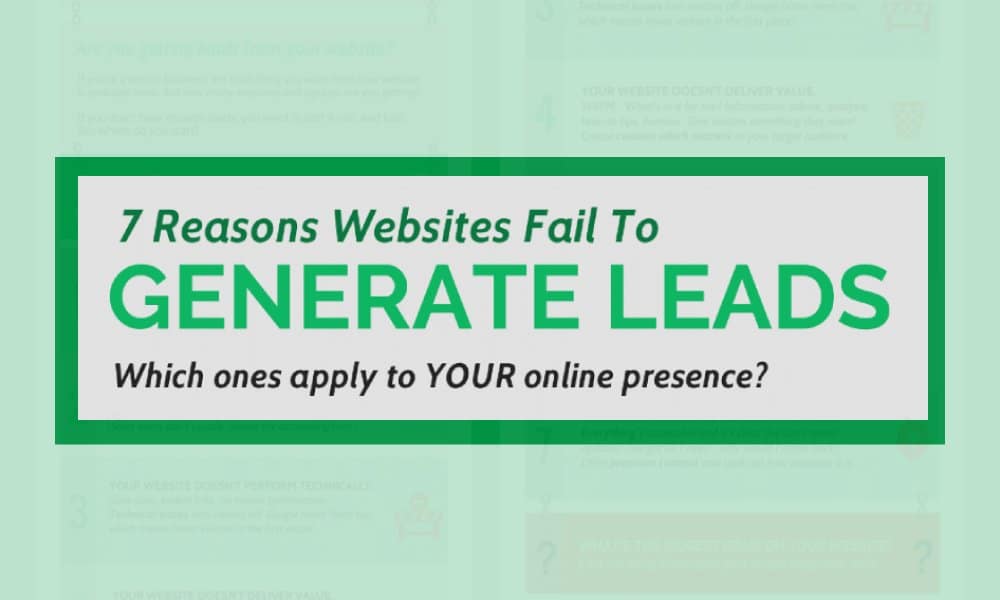Where do your best leads come from?
The image above is part of a neat infographic based on CRM data from hundreds of B2B companies. (See the complete version at the bottom of this post.) It tracks how leads from different lead sources convert to opportunities, plus what percentage of those opportunities convert to won business. There are some interesting insights.
Overall lead conversion statistics
- 13% of leads convert to opportunities (average time 84 days).
- 6% of opportunities convert to sales (average time 18 days)
So only 0.78% of leads convert to sales. This is a great metric to use when assessing your sales performance. Plus, you can see why it’s important to qualify early and concentrate on the most important leads.
And it’s going to take 3 1/2 months on average to close a deal! When you recruit a sales rep, how long is the probation period?
Best and worst lead sources
Study the semicircle at the bottom of the infographic. The best lead sources in terms of converting to actual business are:
- employee and customer referrals
- social media
- website leads
Actually, it’s not that surprising when you think about it. These leads are companies and individuals who have some sort of connection with you, rather than those you contact completely cold. And in modern marketing talk, these lead sources are all part of ‘inbound marketing’ – they come to you rather than you reaching out to them.
So if these are the lead sources to concentrate on, what are the challenges?
How to increase the volume of leads from these sources.
With inbound lead sources, you’re not completely in control of volume. But there are some steps you can take:
- Set up a customer or employee referral programme. If that’s too hard, simply asking for referrals is a good first step. Many small businesses don’t even do that.
- Start your social media now. Or increase the pace a bit. Social media is a slow burn, as people build relationships and trust, but a LinkedIn company page, a blog and a few tweets every week can help you build some presence.
- For social media, make sure the sales message isn’t too aggressive. A good rule of thumb is 80% helpful or interesting information, with only 20% promotional. Try to avoid alienating those who are not yet ready to buy, but still getting calls to action out to those who are further along their journey.
- Optimise your website to generate leads. Have a blog people can comment on or subscribe to. Have a newsletter. Offer some white papers, templates or guides for people who are ready to share an email address.
How to nurture the leads from these lead sources
Here’s where marketing automation really comes into its own!
The simplest option is a regular email newsletter. Include useful and interesting information rather than pushing a hard sell every time. But include material which supports your sales process. Case studies, testimonials, information about new products, or about work you’ve done recently. And include calls to action. As a minimum, have your phone number in large font size, plus a reply email address which a human being looks at
If you have a newsletter established, the next step is nurture programs. Send a series of emails, with the email content tailored to suit the customer, depending on what they downloaded from you in the first place.
***
All of this is a lot of work. And the leads don’t come in right away, they take time. To get the best converting leads, shouldn’t you invest in getting these lead sources working for you? And if you need help, either to set programs up or to run them longer-term, just talk to us and we’re happy to help.

Source: www.implisit.com







